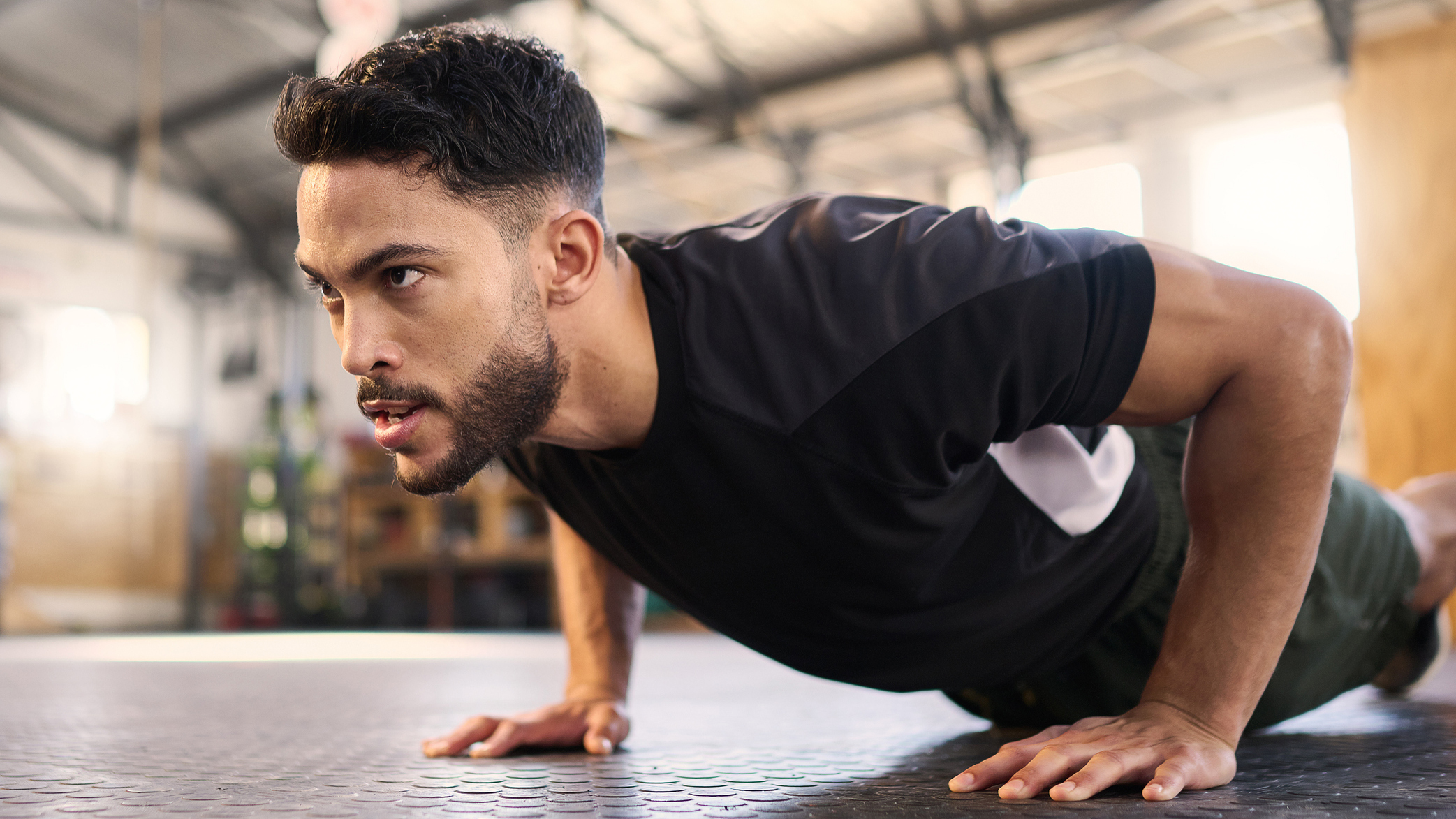
The best at-home chest workout will let you grow your chest without spending hours in the gym. What’s more, you won’t need to buy any equipment. That’s because we’ve got the perfect eight-week plan to help you build chest muscle no matter where you are.
This training plan is the brainchild of NASM-qualified Noom coach John Solle, who credits tempo training as a solid chest builder. “Building a strong chest not only improves your appearance, but it can also help with shoulder stabilization and deep breathing,” he says.
But can you really build chest muscle without any equipment? The answer is a resounding yes. Bodyweight training, also known as calisthenics, is a functional strength training method that can improve overall strength and mobility, build muscle, and develop a stronger core. That's the key component of our exclusive workout, below. You could buy yourself a yoga mat to protect your hands and knees while doing this plan, but a carpeted surface will also provide ample cushioning.
Read on for the entire eight-week home chest workout with tips for maintaining proper form and posture.

Noom Coach John Solle is a personal trainer and corrective exercise specialist, certified by the National Academy of Sports Medicine (NASM). He’s also a certified nutrition coach. He regularly works with athletes to develop tailored strength and conditioning programs, which include corrective exercises and injury prevention advice.
At-home chest workout: an eight-week training plan
“The eight-week program is split into three phases with a concentration on muscle time under tension—how long your muscles work for—usually defined as your exercise tempo,” Solle explains. “To perform this chest routine, it’s important to understand the following muscle actions: eccentric, isometric, and concentric.”
These define the exercise tempo—the speed at which you perform each exercise:
- Eccentric muscle action occurs when a muscle develops tension while lengthening, such as lowering your chest during a push-up
- Isometric muscle action is the equal force being placed on the muscle with no change in muscle length, such as a plank hold
- Concentric muscle action occurs when the muscle develops tension while shortening, such as the pushing-up phase of a push-up.
For example, a 4/2/1 tempo means performing an exercise with a four-second eccentric (lowering) action, a two-second isometric action (pause at the bottom), and a one-second concentric action (pushing upward).
Start your week with achievable workout ideas, health tips and wellbeing advice in your inbox.
This program targets the same muscle groups through different push-up variations. During phase one, you will work on stabilizing the muscles using three exercises and a slow tempo. In phase two, you’ll work on muscular endurance with a medium tempo, and phase three develops power and strength using a fast tempo with less rest and adding supersets.
Remember that difficulty increases when feet elevate above your hands as this shifts your body weight into the upper body. To decrease intensity, elevate your hands or for incline and traditional push-ups, use your knees as an exercise for beginners
Phase 1: Weeks 1-3
Perform the following routine three to four days a week with one rest day in between each, using the 4/2/1 tempo outlined above. Rest 60 to 90 seconds between sets.
Need a little guidance on how to perform each move? Scroll down to see some demonstrations.
- 2 sets: 10-20 x incline push-ups
- 2 sets: 10-20 x traditional push-ups
- 2 sets: 10-20 x decline push-ups
After each session, you’ll have hit 20 to 40 reps of each exercise. Trust us, the next day DOMS is worth it!
Phase 2: Weeks 4-6
Perform the routine three to four days-a-week with one rest day in between each using a 2/1/2 tempo. Rest 60-90 seconds between sets.
- 2 sets: 12-30 x traditional push-ups
- 2 sets: 12-30 x decline push-up
- 2 sets: 8-15 x spiderman push-up
Phase 3: Weeks 7-8
Phase 3 works on building muscle strength and power. Perform the routine 3-4 days a week with 1-2 days of rest between workouts. This workout uses two tempos:
- 1/1/1 tempo, used for strength development
- 1/0/0 tempo, used to develop power and neuromuscular development
For the sessions in the final weeks, you'll need to complete the following exercises. There are rests built in between the sets, but try to complete the moves back-to-back.
- 2 sets: 15-25 x traditional push-up, 1/1/1 tempo. Rest 90-120 seconds between sets
- 3 sets: 8-15 x decline superman push-ups 1/1/1 tempo. Rest 90-120 seconds between sets.
- 3 sets: 10-15 x power push-up using 1/0/0 tempo. Rest 90-120 seconds between sets.
How to do the exercises
Not sure what a decline superman looks like? Here's everything you need to know about the moves in this workout plan.
Incline push-ups
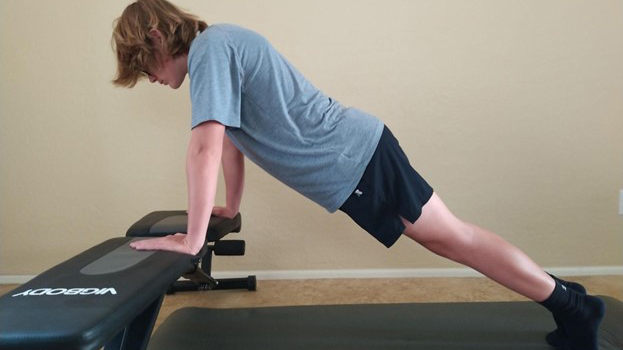

Muscles worked:
Primary movers: pectoralis major, pectoralis minor, deltoids complex: anterior, medial, posterior, and triceps brachii
Stabilizers: rectus and transversus abdominis and external and internal obliques, diaphragm, erector spinae, and lumbopelvic hip complex
How to do it:
- Place your hands on an elevated surface like a bench slightly wider than shoulder width
- Set yourself in the push-up position and tighten the core for stabilization
- Slowly lower yourself to about one inch from the bench
- Hold the position then straighten the arms back to the up position as you exhale
Traditional push-up
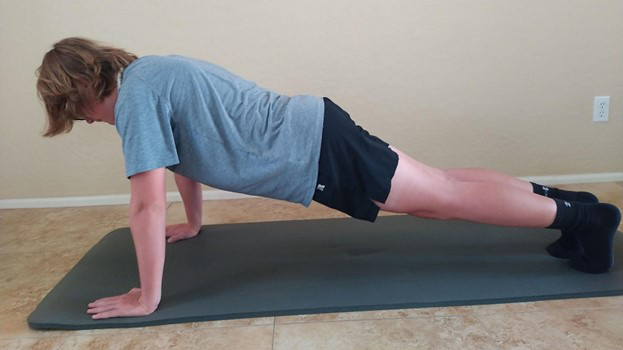
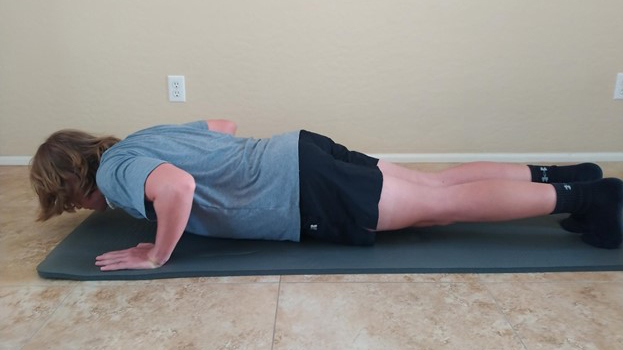
Primary movers: pectoralis major, pectoralis minor, deltoids complex: anterior, medial, posterior, and triceps brachii
Stabilizers: rectus and transversus abdominis and external and internal obliques, diaphragm, erector spinae, and lumbopelvic hip complex
How to do it:
- Place your hands on the floor slightly wider than shoulder width
- Set yourself in the push-up position and tighten your core for stabilization
- Slowly lower yourself to about one inch from your mat
- Hold the position and then straighten the arms back up as you exhale.
Decline push-up
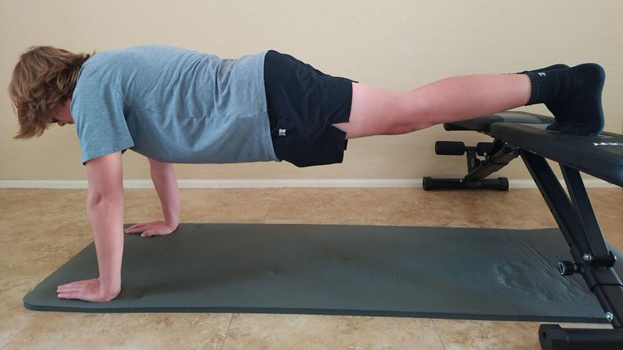

Muscles worked:
Primary movers: pectoralis major, pectoralis minor, deltoids complex: anterior, medial, posterior, and triceps brachii
Stabilizers: rectus and transversus abdominis and external and internal obliques, diaphragm, erector spinae, and lumbopelvic hip complex
How to do it:
- Place your feet on an elevated surface like a bench or your couch and hands on the floor slightly wider than shoulder width
- Set yourself in the push-up position and tighten the core for stabillization
- Slowly lower yourself to about one inch from your mat
- Hold the position and then straighten the arms back to the up position as you exhale.
Spiderman push-up
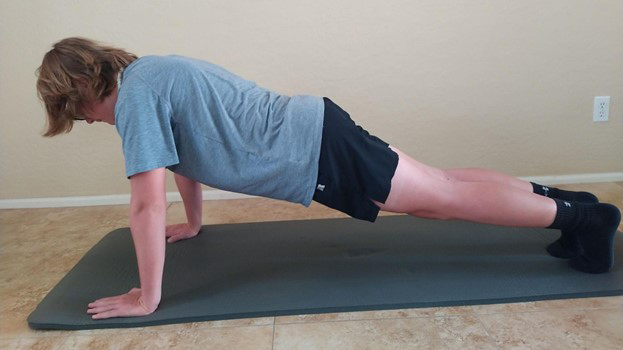
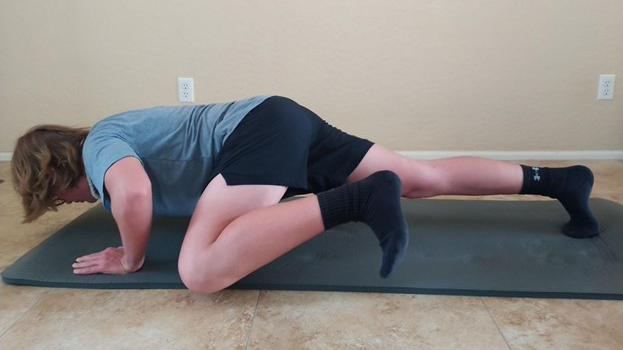
Muscles worked:
Primary movers: pectoralis major, pectoralis minor, deltoids complex: anterior, medial, posterior, and triceps brachii
Stabilizers: rectus and transversus abdominis and external and internal obliques, diaphragm, erector spinae, and lumbopelvic hip complex
How to do it:
- Place your hands on the floor slightly wider than shoulder width
- Set yourself in the push-up position and tighten the core for stabilization
- Slowly lower yourself to about one inch from the floor while simultaneously bending your right leg and tapping your knee to the elbow
- Hold the position
- Straighten the arms back to the up position while straightening the bent leg back to the push-up starting position as you exhale
- Alternate between sides (right leg and left leg)
Decline superman push-ups
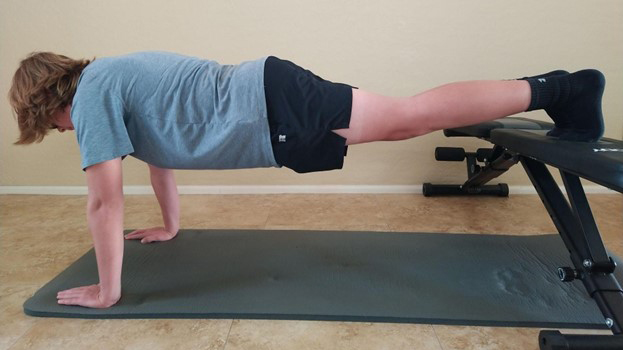

Primary movers: pectoralis major, pectoralis minor, deltoids complex: anterior, medial, posterior, and triceps brachii
Stabilizers: rectus and transversus abdominis and external and internal obliques, diaphragm, erector spinae, and lumbopelvic hip complex
How to do it:
- Place your hands on the floor slightly wider than shoulder width
- Set yourself in the push-up position and elevate your feet on a bench
- Tighten the core for stabilization
- Slowly lower yourself to about one inch from the floor while simultaneously bending your right leg and tapping your knee to the elbow
- Hold the position
- Straighten the arms back to the up position while straightening the bent leg back to the push-up starting position as you exhale
- Alternate between sides (right leg and left leg).
If your interest is piqued, you can find alternative ways to work on your pecs the next chest day using these 5 dumbbell chest exercises and the best chest workouts with resistance bands for more inspiration.

Sam Hopes is a level III fitness trainer, level II reiki practitioner, and resident fitness writer at Future PLC, the publisher of Fit&Well. Having trained to work with both the mind and body, Sam is a big advocate of using mindfulness techniques in sport and aims to bring mental wellbeing to the forefront of fitness. She’s also passionate about the fundamentals of training and how we can build more sustainable training methods. You’ll find her writing about the importance of habit-building, nutrition, sleep, recovery, and workouts.
